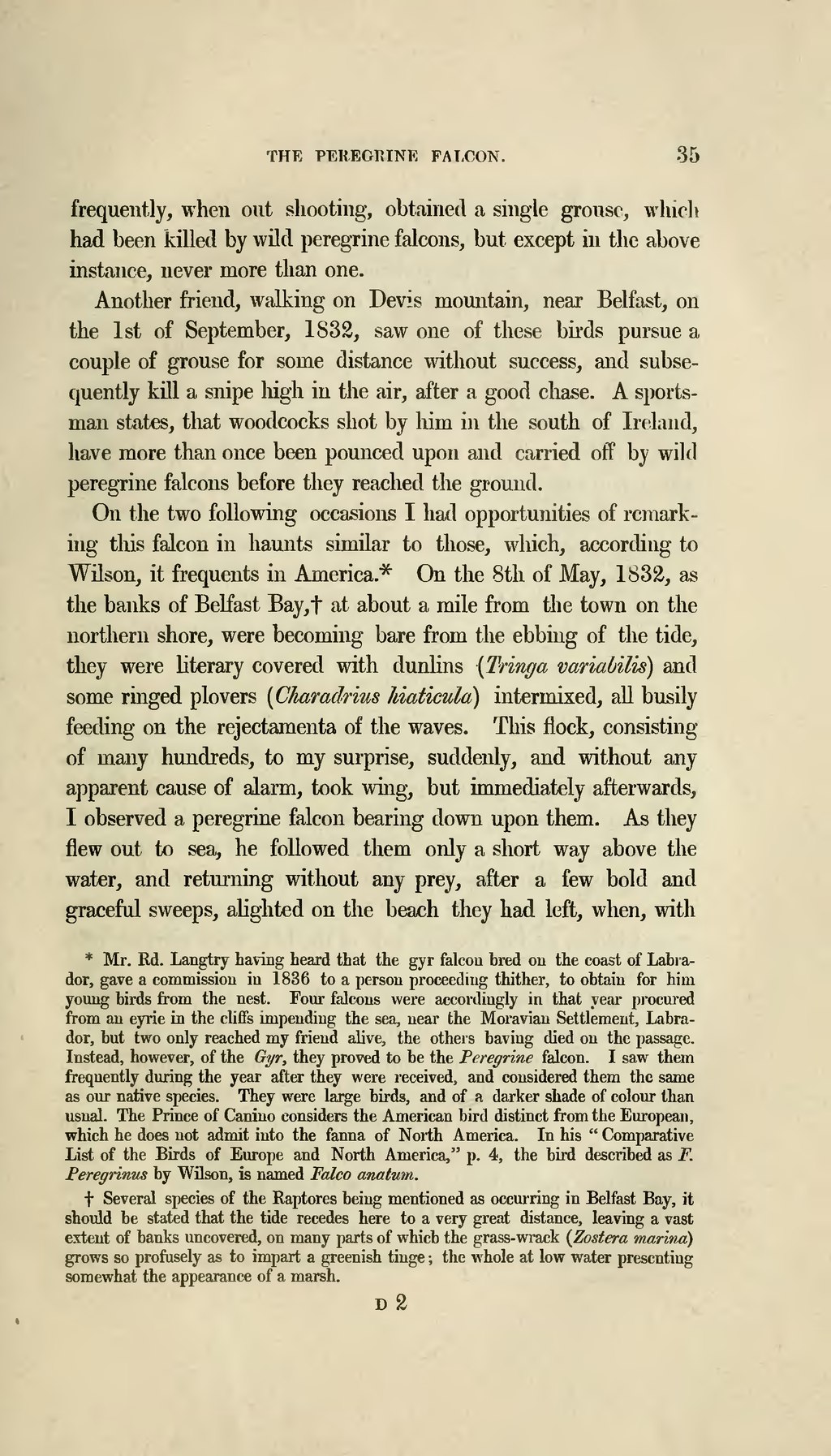frequently, when out shooting, obtained a single grouse, which had been killed by wild peregrine falcons, but except in the above instance, never more than one.
Another friend, walking on Devis mountain, near Belfast, on the 1st of September, 1832, saw one of these birds pursue a couple of grouse for some distance without success, and subse- quently kill a snipe high in the air, after a good chase. A sports- man states, that woodcocks shot by Mm in the south of Ireland, have more than once been pounced upon and carried off by wild peregrine falcons before they reached the ground.
On the two following occasions I had opportunities of remark- ing tins falcon in haunts similar to those, which, according to Wilson, it frequents in America* On the 8th of May, 1832, as the banks of Belfast Bay,f at about a mile from the town on the northern shore, were becoming bare from the ebbing of the tide, they were literary covered with dunlins (Tringa variabilis) and some ringed plovers (Charadrius hiaticula) intermixed, all busily feeding on the rejectamenta of the waves. This flock, consisting of many hundreds, to my surprise, suddenly, and without any apparent cause of alarm, took wing, but immediately afterwards, I observed a peregrine falcon bearing down upon them. As they flew out to sea, he followed them only a short way above the water, and returning without any prey, after a few bold and graceful sweeps, alighted on the beach they had left, when, with
- Mr. Rd. Langtry having heard that the gyr falcon hred on the coast of Labra-
dor, gave a commission in 1836 to a person proceeding thither, to obtain for him young birds from the nest. Four falcons were accordingly in that year procured from an eyrie in the cliffs impending the sea, near the Moravian Settlement, Labra- dor, but two only reached my friend alive, the others having died on the passage. Instead, however, of the Gyr, they proved to be the Peregrine falcon. I saw them frequently during the year after they were received, and considered them the same as our native species. They were large birds, and of a darker shade of colour than usual. The Prince of Canino considers the American bird distinct from the European, which he does not admit into the fauna of North America. In his " Comparative List of the Birds of Europe and North America," p. 4, the bird described as F. Feregrinus by Wilson, is named Falco anatum.
f Several species of the Raptores being mentioned as occurring in Belfast Bay, it should be stated that the tide recedes here to a very great distance, leaving a vast extent of banks uncovered, on many parts of which the grass-wrack (Zostera marina) grows so profusely as to impart a greenish tinge ; the whole at low water presenting somewhat the appearance of a marsh.
D 2
